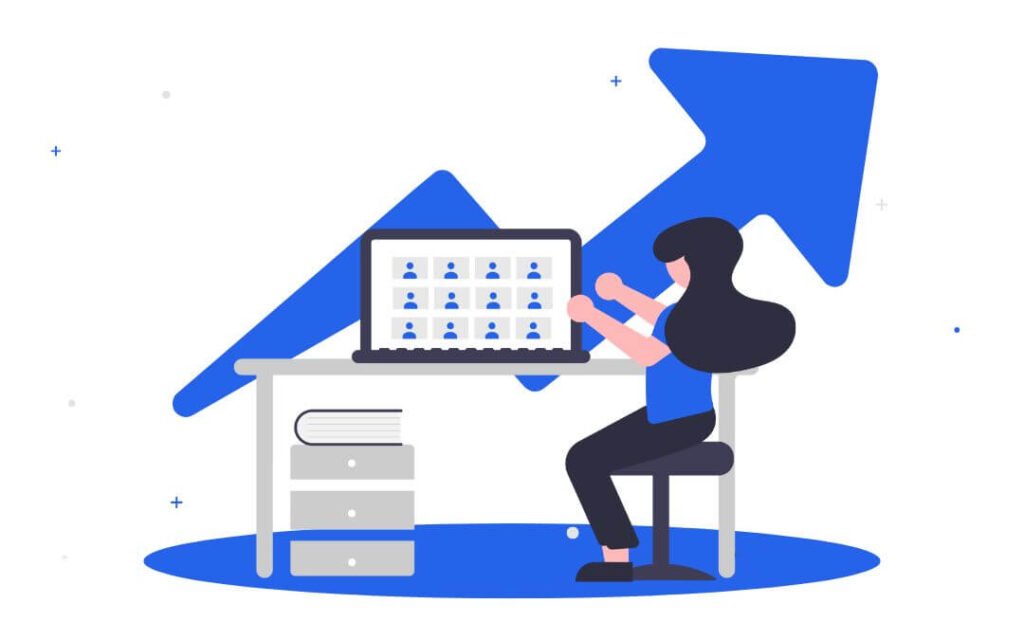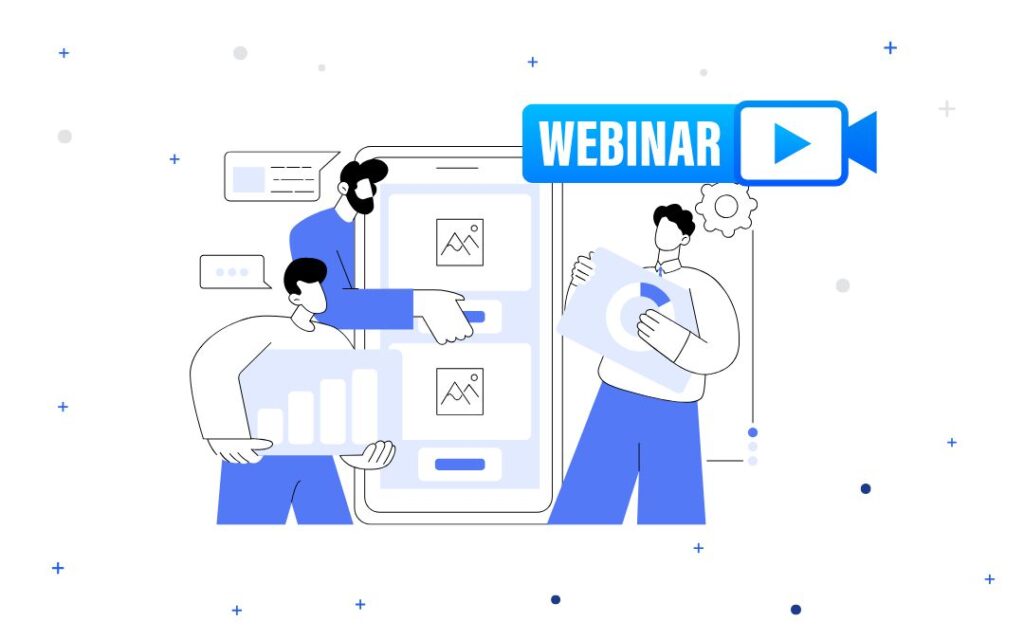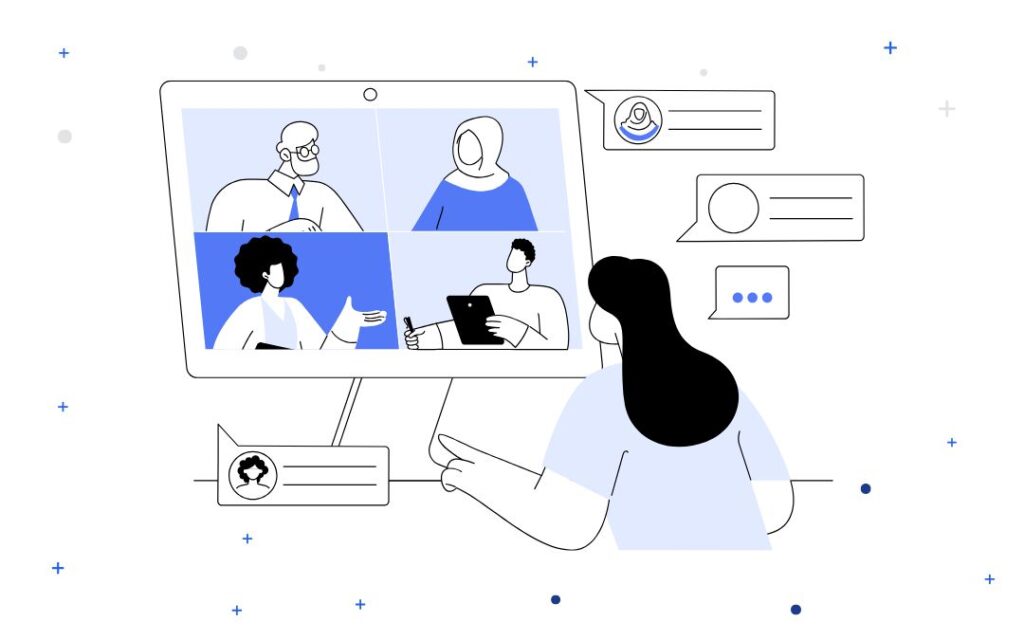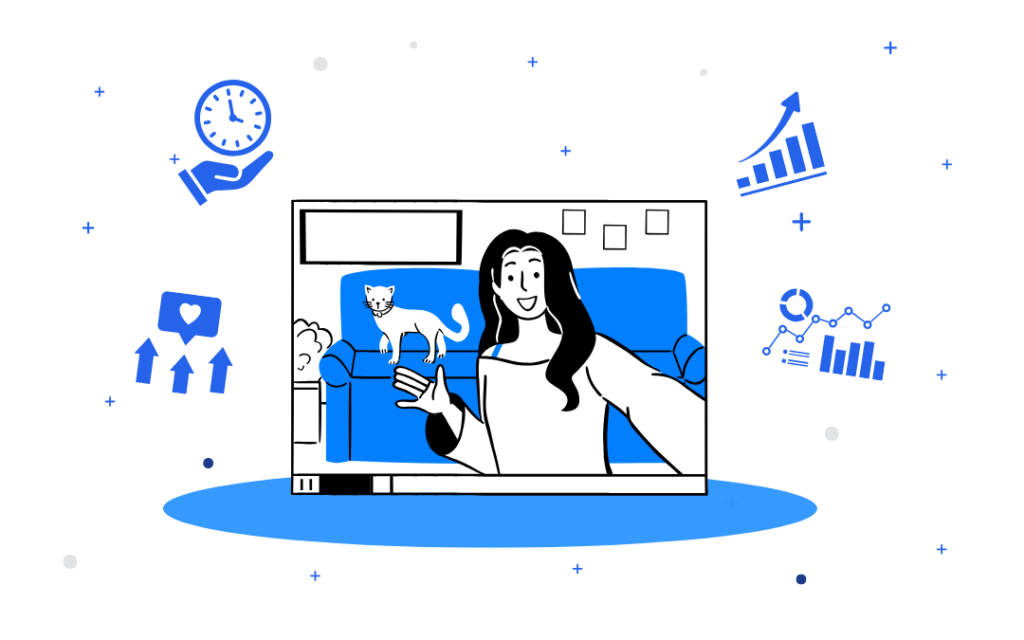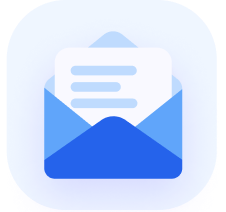Webinars are a powerful tool for engaging with prospects and showing the value of your product or service.
In fact, more than 60% of B2B marketers agree that webinars are an effective component of their content marketing strategies.
However, not all webinars are built the same.
A webinar with poor execution leads to missed opportunities. But a compelling webinar that educates and offers value leads to higher conversions.
In this article we’ll cover how to improve a webinar to increase attendance and fast-track your sales. You’ll also learn the 3 mistakes you might be making when running your webinars (and how to fix them).
When you partner with a webinar automation platform like AEvent, you can streamline audience engagement and increase your profits by 20-30%. Schedule a demo with us today! Our platform simplifies the entire webinar process, from registration, to delivery, and follow-up.
Why Your Webinars Aren’t Getting Results
It can be frustrating to run webinars with the hope of getting more sales, but not quite hitting the mark.
The reason often has to do with how you run your pre-webinar and post-webinar campaigns.
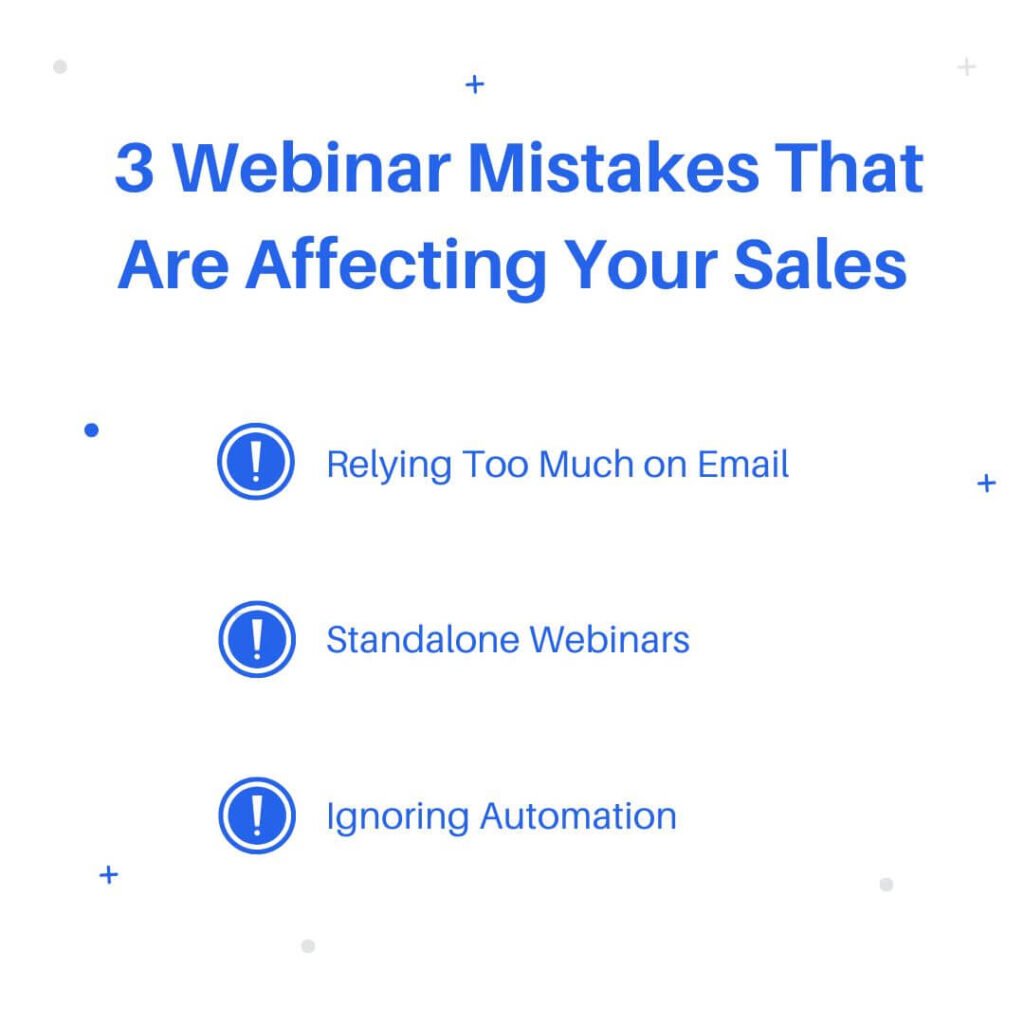
Without a clear strategy that addresses these aspects, your webinars may not engage or convert as expected.
Here are 3 top webinar mistakes to avoid:
Relying Too Much on Email
Email marketing is an essential component of promoting webinars. It counts for 57% of webinar registrations.
The problem is that over-reliance on email can limit your reach.
Today’s audience interacts with a variety of digital channels daily.
If you focus solely on email invites and reminders, you miss out on engaging potential attendees through social media, content marketing, and other communication platforms.
Diversifying your promotional strategies to include text messages, social media reminders, and ringless voicemail can broaden your webinar’s visibility and attract a more targeted audience.
Treating Webinars as Standalone Events
A common mistake is to view webinars as isolated occurrences rather than integral parts of a broader marketing campaign.
This approach can lead to missed opportunities for nurturing leads before and after the event.
Webinars should be woven into your marketing strategy, with clear paths for attendees to continue their journey with your brand post-event.
Integrating your webinars with other marketing initiatives creates a cohesive experience that guides attendees toward becoming customers.
Ignoring Automation
Automation increases the efficiency of your webinar strategy, yet it’s often overlooked.
Automating aspects like registration confirmations, reminder emails, and follow-up messages saves time and sets consistent communication with your webinar audience. It can also lead to a 34% increase in your sales revenue.
Ignoring these tools can result in a static and less compelling webinar experience, which affects attendance and conversion rates.
7 Strategies to Improve Webinar Quality
Improving a webinar involves careful planning. You need the right strategy so your campaign resonates with the target audience.
If your webinar registration page is epic, roughly 51% of visitors will convert on the initial sign-up. But you’ll be lucky to get 30 % of those people to attend.
Here are 7 strategies you can implement in your next online event.
1. Direct Messaging
Direct messaging offers a more immediate and personal way to connect with attendees.
It bypasses crowded email inboxes so your message gets noticed right away. Compared to the average 38.49% open rate of emails, SMS open rates can reach up to 98%.
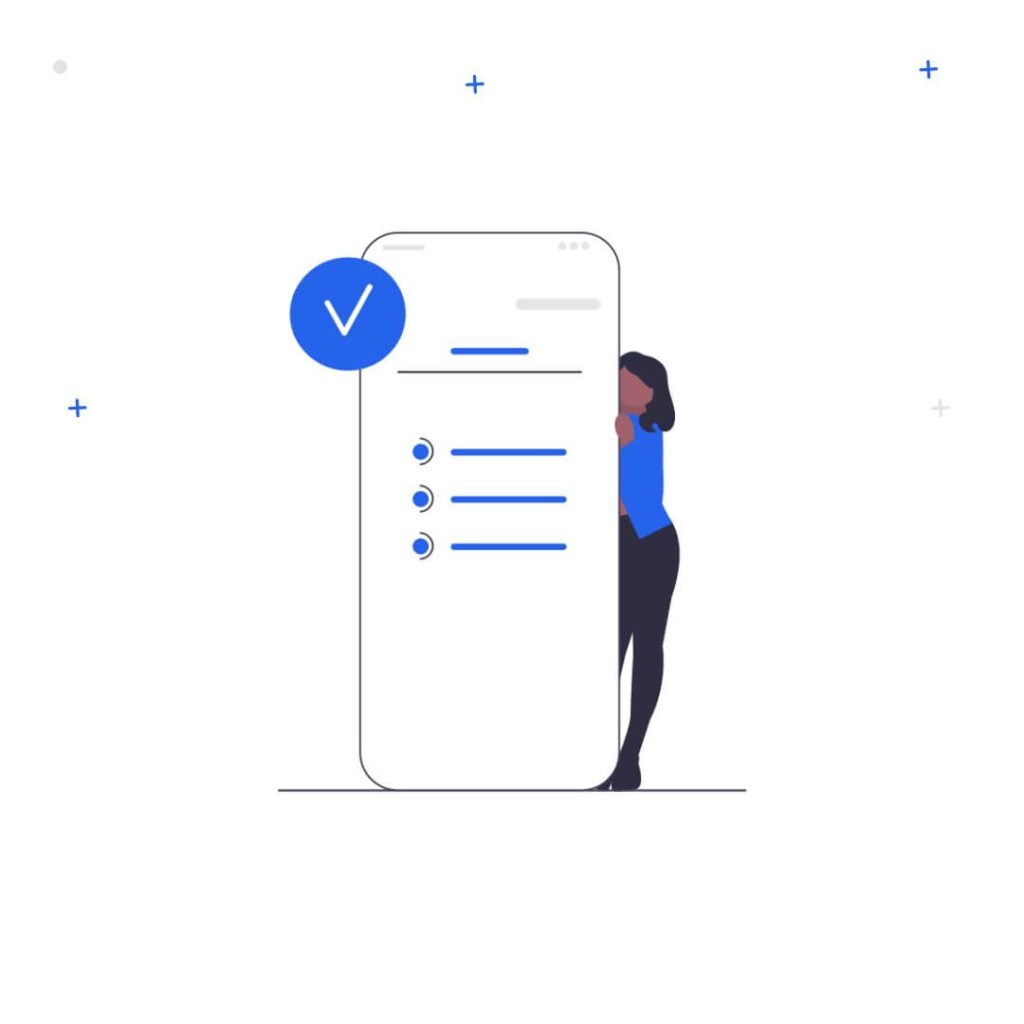
DMs and text messages also allow for two-way interaction that encourages attendees to ask questions or express their interest.
On your registration page, get your audience to opt-in to receiving DMs or texts. Add a field to ask for their phone number or social media profile.
By increasing the channels you can use to reach people, you’ll improve your show-up rate.
SMS/MMS
SMS/MMS messages are effective for engaging with prospects as soon as they register for the webinar.
Send a quick thank you text confirming that they’ve signed up and reserved their spot. Then, schedule reminders before the event. Aim for at least one text a day leading up to your event and a couple of texts the day of your event.
With AEvent, you can integrate SMS and text messaging tools like SlickText, Roezan, and WhatsApp for webinar communications. You can automate your reminders and send them to registrants at your preferred time.
Seeing notifications on their phones keeps the webinar top-of-mind and increases your audience’s chances of attendance.
Using images or short videos in your MMS messages is also great for adding a visual element to your messages.
For example, send a picture message showing the webinar setup or a teaser of the content.

Social Media DMs
Platforms like Facebook and Instagram are great for sending personalized DMs to webinar attendees.
You can even integrate ManyChat to automate interactions on Facebook Messenger and social media.
The key is to use this strategy sparingly. You don’t want to come across as too pushy or salesy by overwhelming your audience with reminders.
Space out each message and consider the restrictions each platform has about sending DMs.
Write your message the way you would write to a colleague – short, simple, and to the point. Say a quick hello, remind of the webinar’s name and contents, and mention the date and time of the webinar.
2. Pre-Webinar Indoctrination
Initiating contact as soon as someone registers for your webinar fosters a continuous engagement strategy.
The pre-webinar indoctrination series should include a mix of content types, such as emails, targeted messages, free ebooks, resources, or educational videos.
This way, you cater to different preferences and segments in your audience. It also makes your content more engaging and accessible.
Each piece of content should offer real value to the attendees. Help them understand the importance of the webinar topic and how it solves their problem.
A good example is sharing teasers and exclusive info in your webinar opt-in sequence to build anticipation and encourage interaction.
Most importantly, invite feedback or questions throughout the indoctrination process. This strengthens the attendees’ emotional investment in the event.
3. The 30 Minute Rule
Start your webinars 30 minutes early. It sounds counter-intuitive, but there’s a logic behind this strategy.
First, it allows early attendees to join in on casual chats and Q&A sessions, which boosts their commitment to staying for the main event.
Second, starting the webinar 30 minutes early builds trust and credibility.
Your attendees want to hear from a real person they can relate to, not another business pushing an offer.
Remember, 7 out of 10 prospects buy from brands they trust.
All you need is 30 minutes to warm up your audience before the main presentation. Just let them know you’re opening the room early and they can log in.
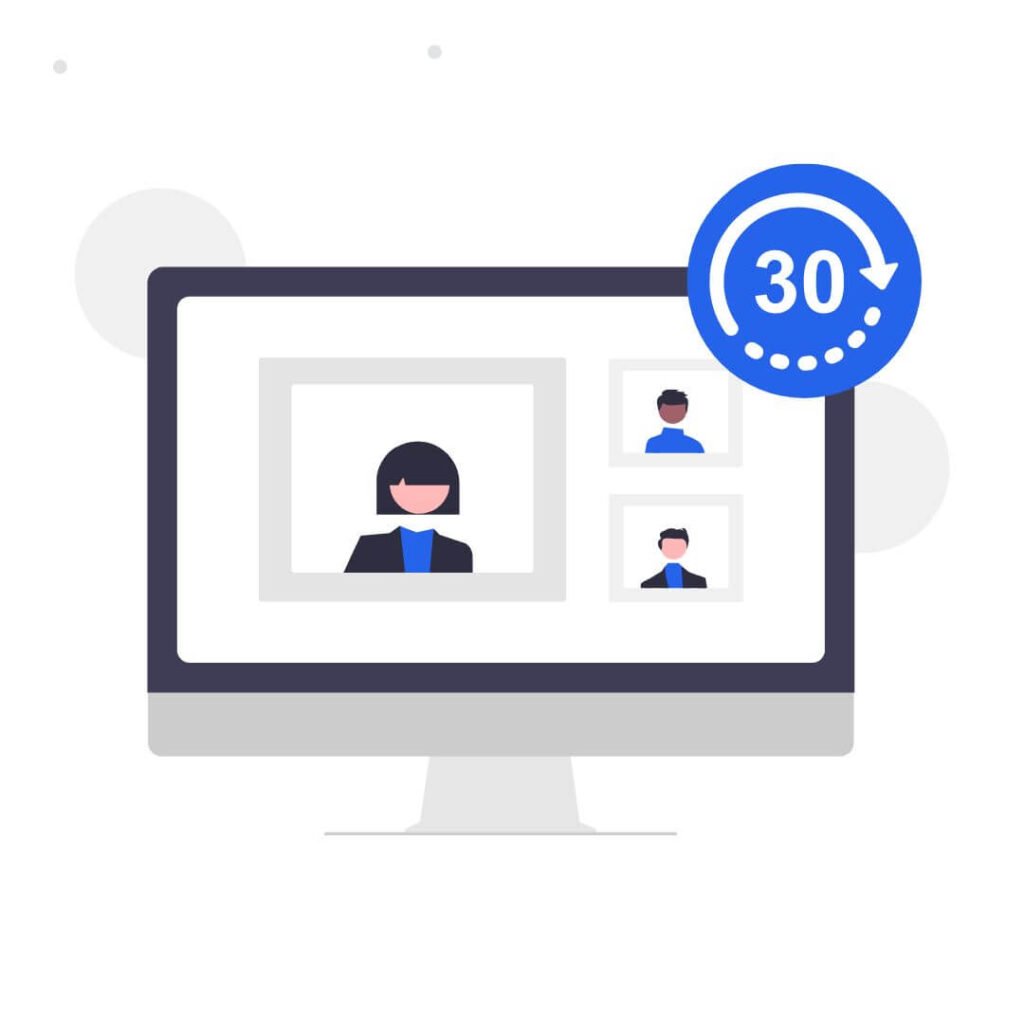
When it’s time to pitch your offer, your audience will be more receptive since they already established a connection with you.
4. Event-Driven Campaigns
Your webinars are not standalone presentations. They are part of a larger marketing campaign designed to meet certain goals.
Instead of a one-off event, treat your webinar as an event with a series of sessions or content pieces before and after the main webinar.
This can include teaser videos, pre-webinar workshops, and follow-up Q&A calls that go deeper into the topic.
When you promote the webinar as a series that’s part of a bigger event, you build anticipation and keep attendees engaged over a longer period.
This strategy also fosters a sense of community among participants.
As attendees engage over multiple sessions, they become more invested in the content and your brand (which helps create a loyal following).
5. Webinar Automation
Automating your webinars means using a range of technologies and tools to streamline the planning, execution, and follow-up phases of your online event.
Many automation platforms let you run your webinar on autopilot.
You can continuously generate leads, send pre-scheduled emails, and run lead-nurturing campaigns.
It’s important to choose a platform that integrates seamlessly with your existing marketing tools, such as CRM systems, email marketing software, and analytics tools.
This integration allows for a more cohesive and automated workflow. It reduces manual tasks and creates a consistent experience for attendees.
With AEvent, you can run all these automations on one platform. AEvent fully integrates with both Zoom and GoToWebinar for easier event management.
All you need is to create a webinar timeline and add specific actions to your preferred schedule.
For example, you can set post-webinar follow-up emails for days after the main event and have them go out at the exact time you want.
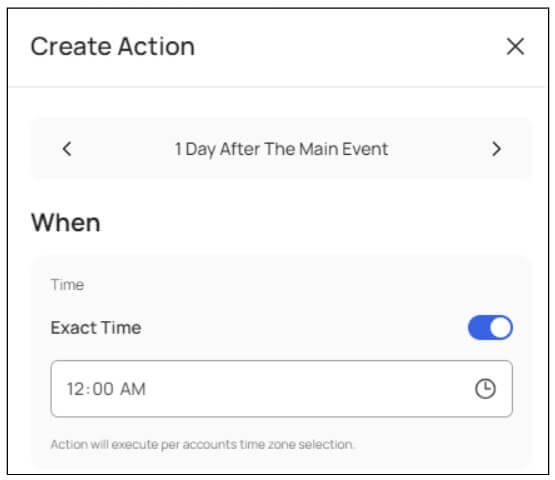
6. Immersive Experiences
Immersive webinar experiences use technology and interaction strategies to make participants feel involved and invested in the content.
These immersive experiences turn a standard presentation into an event that engages the audience from start to finish.
45% of B2B customers actually prefer interactive content when deciding whether to purchase a product or service.
To make your webinars more immersive, open live polls and surveys to gather audience opinions, preferences, or feedback.
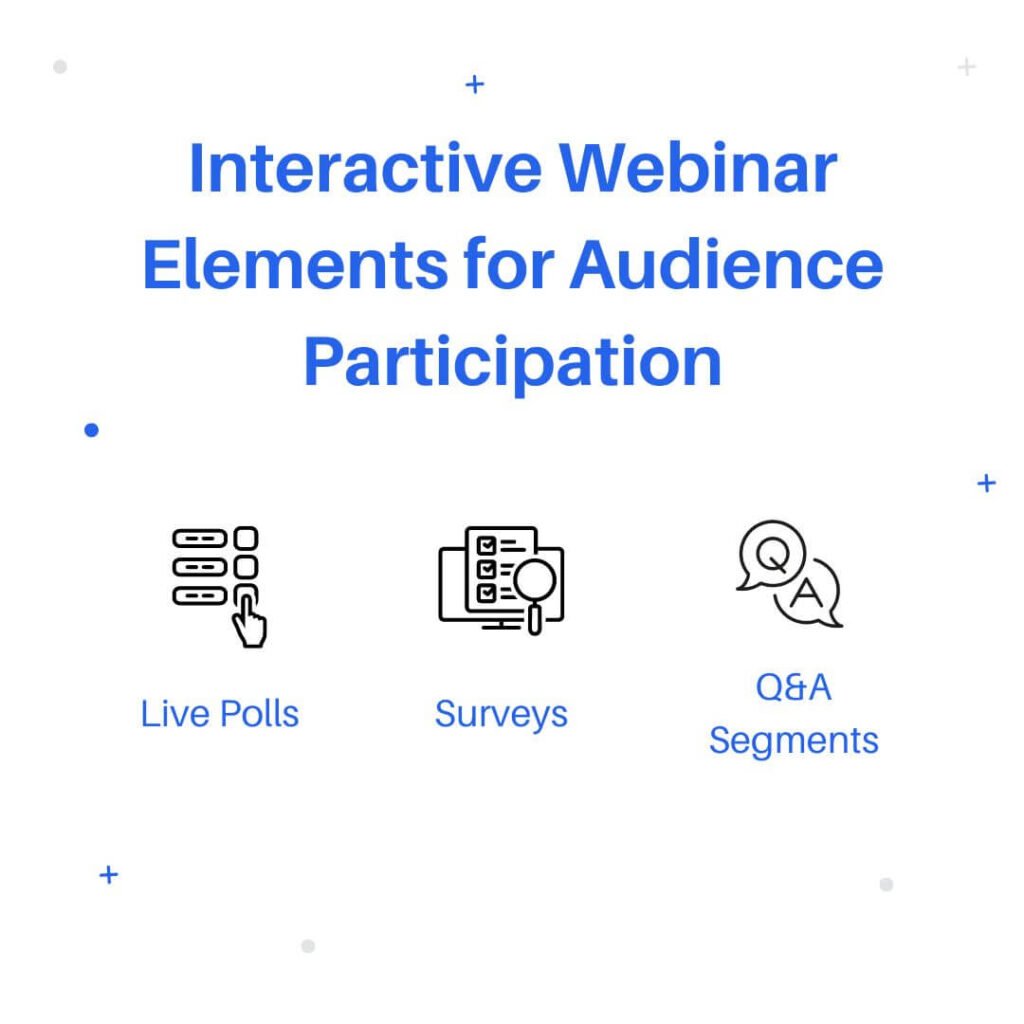
With AEvent, you can also set up auto-chat messages to your audience 5 minutes after the start time to welcome them into the broadcast room.
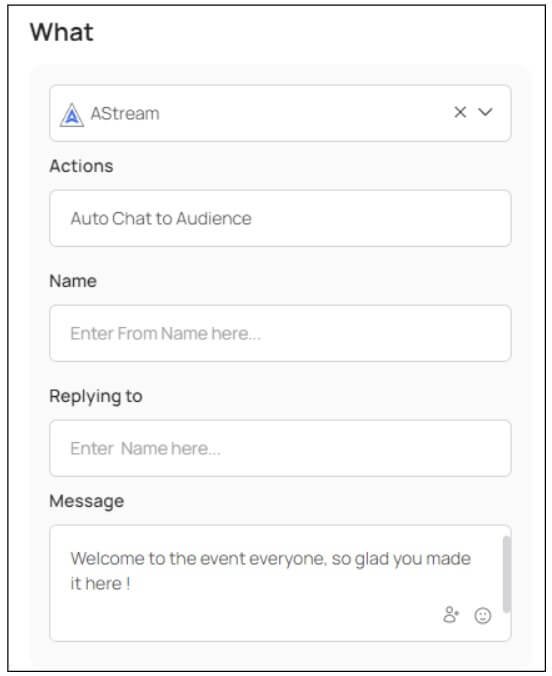
For larger webinars, consider using breakout rooms to divide attendees into smaller groups for discussions or workshops.
Assign moderators to each room to guide the discussion, answer questions, and ensure that everyone has the opportunity to participate.
It helps to provide handouts or resources attendees can use during the webinar. These could include worksheets, checklists, or PDFs that complement the webinar content.
7. Create Memorable Content
Compelling content is the heart of any successful webinar.
Use visuals, such as slides, infographics, or short videos, to complement your discussion.
Delivery is also important. Break down complex topics into digestible segments.
Even if your webinar audience is composed of professionals, they’ll appreciate a straightforward, clear explanation that respects their time and intelligence.
If applicable, include live demonstrations of products, software, or techniques. Seeing something in action adds realism and makes the learning experience more tangible.
Most importantly, tailor your content according to your target audience. 91% of buyers are more likely to buy from brands that provide relevant recommendations.
This strategy will help you deliver your content more effectively to your audience so they’ll be ready to consider your main offer.
AEvent Improves Your Webinars from A to Z
The effectiveness of your webinars hinges on more than just the content you present. It involves how you promote, connect, and automate the entire process.
Expanding your communication channels to include SMS/MMS, combined with an event-driven campaign, increases your chances of success.
AEvent helps transform your webinar strategies through seamless integration, automation capabilities, and engagement tools.
With AEvent, you’re creating immersive event experiences that resonate with your audience and drive results.
Book a demo with AEvent today and discover how we can help you achieve your marketing goals from start to finish.

